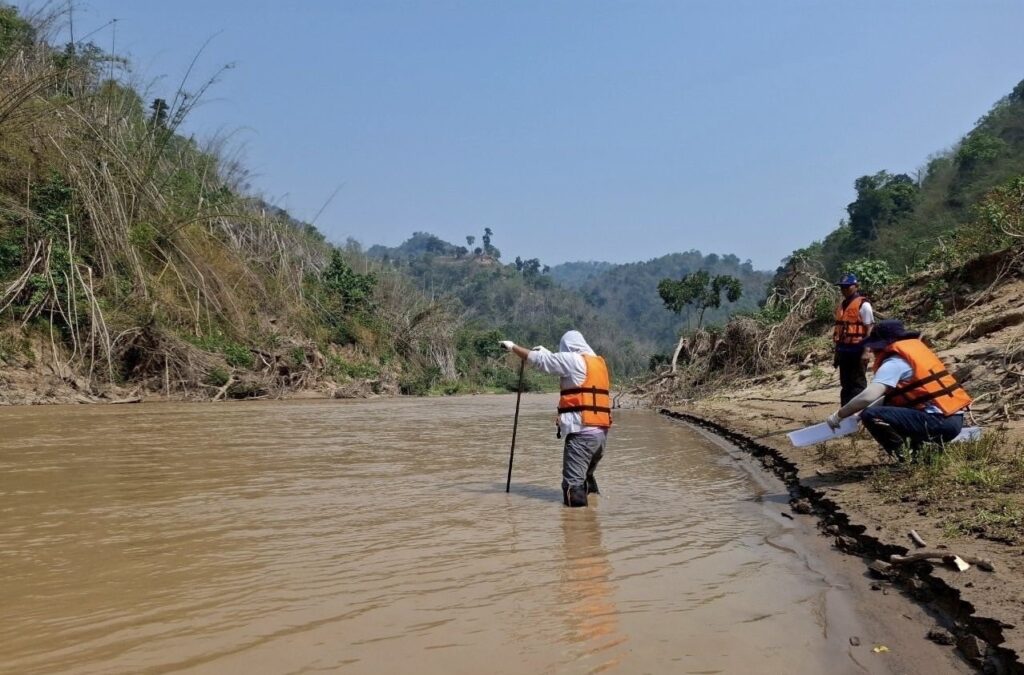The initiative is another attempt by states concerned to address the issue, which is newly emerging out of the political and environmental complexity of the region
The Mekong River Commission (MRC) has revealed that it is now supporting constructive cooperation between Myanmar and Thailand to address growing concerns over water quality in the Kok River, a transboundary tributary of the Mekong River that flows from Myanmar into northern Thailand.
The river is among a few others, including the Mekong itself in the North of Thailand,d that has been mentioned as being among the waterways that may have been contaminated by toxic substances discharged from mining upstream in Myanmar. (Read: PM asked to urgently address toxic contamination in Kok and Sai rivers before the rainy season arrives)
The MRC noted that in late April, the Thai National Mekong Committee (TNMC) formally requested the MRC to help engage Myanmar, which is a Dialogue Partner under the MRC framework, to jointly assess this emerging issue. In response, the MRC Secretariat’s Environmental Management Division promptly initiated coordination efforts to facilitate a collaborative approach.
It proposed the establishment of a Joint Water Quality Monitoring (JWQM) initiative between Myanmar and Thailand. According to the MRC, the initiative aims to enable a scientifically grounded assessment of the water quality and promote coordinated action.
It is anchored in the Procedures for Water Quality (PWQ), one of the MRC’s five core procedures agreed upon by its four member countries, which includes regionally agreed-upon Water Quality guidelines for the protection of human health and aquatic ecosystems. The PWQ also provides a mechanism for assessing and communicating incidents that may have potential transboundary impacts.
Last week, Myanmar officially responded to the proposal, expressing its willingness to participate in the joint monitoring initiative, the MRC said.
The initiative will cover the exchange of data, technical expertise and resources between the environmental agencies of both countries. Its key work components will include regular water sampling and analysis at critical locations along the Kok River, joint capacity-building activities, the development of early warning systems for pollution events, and transparent public reporting to engage local stakeholders and communities.
The MRC Secretariat is now working closely with both sides and is preparing to convene the first coordination meeting to agree on the scope and work plan for the JWQM initiative as soon as possible, the organisation noted.
“Through this effort, the MRC aims to address immediate concerns and strengthen long-term technical cooperation and trust between countries in managing sensitive transboundary water resources, underscoring our continued commitment to conflict resolution, environmental diplomacy, and sustainable water governance in the Mekong Basin,” said the MRC in its recent press release.
Earlier, Thailand also tried to work on the issue with Myanmar, following pressure building up from civil society and local residents. Deputy PM Prasert Chantararuangthong, in his capacity as the Chair of the newly set up subcommittee under the National Environment Board (NEB) to solve water quality in inland water sources, said talks at different levels and in different frameworks have been initiated to try to address the issue, but the government-to-government is what he expects the most.
Mr. Prasert said a new international cooperation working group has also been set up to officially kickstart discussions with Myanmar, and the government of Myanmar has responded positively, agreeing to cooperate. The dates are being set, and he will lead the team himself to inspect the situation in Myanmar as well as share guidelines or good practices in mining with the neighbouring country, the Deputy PM further said.
Indie • in-depth online news agency
to “bridge the gap” and “connect the dots” with critical and constructive minds on development and environmental policies in Thailand and the Mekong region; to deliver meaningful messages and create the big picture critical to public understanding and decision-making, thus truly being the public’s critical voice


